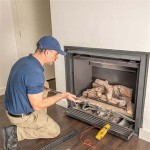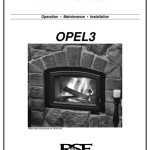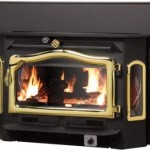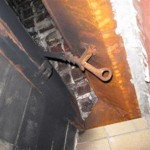How To Clean a Slate Fireplace
A slate fireplace, admired for its natural beauty and durability, can accumulate soot, dust, and other debris over time. Regular cleaning is essential to preserve its appearance and prevent the buildup of stubborn stains. This article presents a comprehensive guide on how to effectively and safely clean a slate fireplace, covering preparation, cleaning methods, and maintenance tips.
Preparation Before Cleaning
Before commencing the cleaning process, proper preparation is crucial. This involves gathering the necessary materials and taking precautions to protect the surrounding areas. Neglecting these initial steps can lead to unsatisfactory cleaning results or potential damage.
The following materials are typically required:
- Soft-bristled brush
- Vacuum cleaner with a hose attachment
- Mild dish soap
- Warm water
- Clean buckets
- Soft cloths or sponges
- Slate sealant (optional, for resealing)
- Safety glasses
- Gloves
- Drop cloths or plastic sheeting
The initial step involves protecting the surrounding area. Spread drop cloths or plastic sheeting around the fireplace to prevent dirt and cleaning solutions from staining the floor or nearby furniture. Secure the edges of the drop cloths to prevent movement during the cleaning process. Consider using painter's tape to further secure the drop cloths to the floor.
Next, remove any loose debris from the fireplace. Use the soft-bristled brush to gently sweep away loose soot, ash, and dust from the surface of the slate. Pay close attention to crevices and corners where debris tends to accumulate. A vacuum cleaner with a hose attachment can then be used to remove the brushed-off debris. Ensure the vacuum cleaner has a brush attachment to prevent scratching the slate surface.
Personal safety is paramount. Wearing safety glasses and gloves will protect the eyes and hands from irritants and cleaning solutions. Ensure adequate ventilation in the room by opening windows or using a fan. This will help to dissipate any fumes from cleaning products.
Cleaning Methods for Slate Fireplaces
Different cleaning methods can be employed depending on the level of soiling and the type of stains present on the slate. For light cleaning, a mild soap and water solution may suffice. For more stubborn stains, specialized cleaning agents or techniques may be necessary. It is important to always test cleaning solutions in an inconspicuous area first to ensure they do not damage or discolor the slate.
Light Cleaning with Mild Soap and Water:
This method is suitable for regular maintenance and removing light dust and soot. In a clean bucket, mix a small amount of mild dish soap with warm water. Avoid using harsh detergents or abrasive cleaners, as they can damage the slate surface. The solution should be diluted enough to create a gentle cleaning agent. Test the solution on a small, hidden area of the slate to ensure it does not cause any discoloration or damage.
Dampen a soft cloth or sponge in the soapy water solution, ensuring it is not overly saturated. Gently wipe the slate surface, working in small sections. Avoid applying excessive pressure, as this can scratch the slate. Pay attention to areas with visible dirt or soot buildup. Rinse the cloth or sponge frequently in clean water to remove dirt and grime.
After wiping the entire surface with the soapy solution, rinse the slate thoroughly with clean water. Use a clean, damp cloth or sponge to remove any soap residue. It is crucial to remove all traces of soap, as residue can attract dirt and leave a dull film on the slate. Dry the slate thoroughly with a clean, dry cloth. This will prevent water spots and help to restore the slate's natural luster.
Cleaning Stubborn Stains:
For more difficult stains, such as soot buildup or water stains, a stronger cleaning solution may be required. However, it is essential to exercise caution and test any new cleaning agents in an inconspicuous area before applying them to the entire surface. Baking soda paste is a safe and effective option for removing stubborn stains. Mix baking soda with water to form a thick paste. Apply the paste to the stained area and let it sit for 15-20 minutes.
After allowing the baking soda paste to sit, gently scrub the area with a soft-bristled brush. Avoid using abrasive scrub pads, as they can scratch the slate. Rinse the area thoroughly with clean water to remove all traces of the baking soda paste. This may require multiple rinses to ensure complete removal.
Another option is to use a specialized slate cleaner. These cleaners are specifically formulated to remove stains and dirt from slate without damaging the surface. Ensure that the slate cleaner is pH neutral and non-abrasive. Follow the manufacturer's instructions carefully when using a slate cleaner. Typically, the cleaner is sprayed onto the surface, allowed to dwell for a specified time, and then wiped off with a clean cloth.
For particularly stubborn soot stains, a soot remover designed for fireplaces can be used. These products are typically applied directly to the soot buildup and allowed to sit for a specified time before being wiped away. Always follow the manufacturer's instructions and test the soot remover in an inconspicuous area first.
Cleaning the Firebox Interior:
The interior of the firebox requires a different approach than cleaning the exterior slate. The firebox is exposed to high temperatures and heavy soot buildup. First, remove all ash and debris from the firebox. A shovel and ash bucket are useful for this purpose. Dispose of the ash properly in a metal container with a tight-fitting lid. Ensure the ash is completely cool before disposal.
Use a stiff-bristled brush to scrub the interior of the firebox. Focus on removing loose soot and creosote buildup. A wire brush can be used for more stubborn deposits, but exercise caution to avoid damaging the firebox lining. A vacuum cleaner with a hose attachment can be used to remove the brushed-off debris. Ensure the vacuum cleaner has a filter suitable for handling fine ash particles.
For stubborn creosote buildup, a specialized creosote remover can be used. These products are typically applied to the affected areas and allowed to sit for a specified time before being scrubbed and wiped away. Follow the manufacturer's instructions carefully and ensure adequate ventilation during use.
Maintaining a Slate Fireplace
Regular maintenance is essential to keep a slate fireplace looking its best and to prevent the buildup of stubborn stains. This includes regular dusting, cleaning spills promptly, and resealing the slate periodically.
Dust the slate fireplace regularly with a soft, dry cloth to remove loose dust and debris. This will prevent dust from settling into the pores of the slate and becoming difficult to remove. Vacuum the fireplace surround periodically to remove dust and debris from crevices and corners.
Clean spills promptly to prevent staining. Blot up spills immediately with a clean, absorbent cloth. Avoid rubbing the spill, as this can spread the stain. For stubborn spills, use a mild soap and water solution to gently clean the affected area. Rinse thoroughly with clean water and dry with a clean cloth.
Resealing the slate periodically can help to protect it from stains and water damage. Slate is a porous material, and sealing it can help to prevent liquids from penetrating the surface. The frequency of resealing depends on the type of sealant used and the level of use the fireplace receives. A general guideline is to reseal the slate every one to three years. Before applying a sealant, clean the slate thoroughly and allow it to dry completely. Follow the manufacturer's instructions for application. Typically, the sealant is applied with a brush or cloth and allowed to dry for a specified time. Apply multiple coats of sealant for optimal protection.
Inspect the fireplace regularly for cracks or damage. Small cracks can be repaired with a slate repair kit. Larger cracks or damage may require professional repair. Addressing cracks and damage promptly can prevent further deterioration of the slate.
Consider using a fireplace screen to protect the slate from soot and ash buildup. A fireplace screen will also prevent sparks from escaping the firebox and potentially causing a fire hazard. Ensure the fireplace screen is properly sized for the fireplace opening.
By following these cleaning and maintenance guidelines, the beauty and longevity of a slate fireplace can be preserved. Consistent care will ensure that the fireplace remains a focal point of the room for years to come.

How To Clean A Slate Hearth

How To Clean Slate Fireplace The Blog At Fireplacemall

How To Clean Slate Homeowner S Guide Bob Vila

How To Clean Slate Homeowner S Guide Bob Vila

How To Clean Slate Fireplace The Blog At Fireplacemall

How To Clean A Stone Hearth Cleanipedia

How I Clean My Slate Surround Fireplace Slatefireplace Babyoil

How To Clean Seal An Interior Slate Floor A Guide Internal Care

How To Clean Slate Fireplace Surround

How To Clean Slate Fireplace The Blog At Fireplacemall
Related Posts








